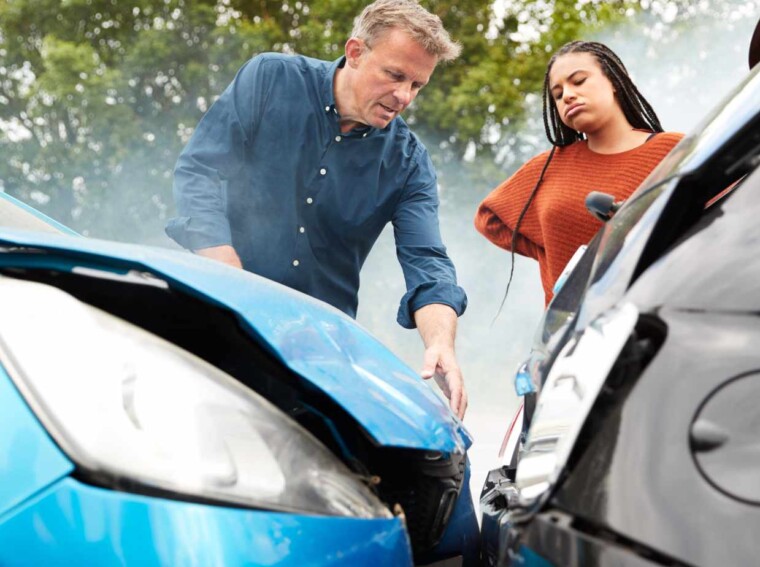It’s one of those split-second decisions that could potentially alter the course of your life – swerving to avoid an accident. But does this defensive maneuver put you in the crosshairs for responsibility? As a seasoned driver and safety advocate, I’ve spent considerable time delving into this complex issue.
In most cases, whether you’re at fault or not depends on the details surrounding the incident. Fault is typically determined by state law and can vary significantly from one jurisdiction to another. Often, it boils down to who had the right of way and whether your reaction was reasonable under the circumstances.
Let’s say you’re cruising down a highway when suddenly, out of nowhere, a vehicle cuts across your path causing you to swerve abruptly and crash into another car. In such cases, it may be deemed that you were acting reasonably given an unforeseen hazard confronted you. However, if there weren’t any imminent dangers and you simply overreacted or misjudged a situation leading to an accident, liability might fall squarely on your shoulders.
It’s crucial to remember that every circumstance is unique with its own set of variables. Thus understanding how fault determination works can help ensure we’re making informed decisions on the road while also protecting ourselves legally.
If You Swerve to Avoid an Accident, Are You at Fault?
Let’s dive right into the heart of this perplexing question. Who’s to blame when you swerve to avoid a collision and still end up in an accident?
Legal Perspective: If You Swerve, Are You at Fault?
From a legal standpoint, it ain’t as clear cut as you might think. The driver who swerves is not always held accountable for the subsequent crash. It often boils down to whether your action was considered reasonable under the circumstances. Courts usually ask if a ‘reasonable person’ would’ve done the same thing in your shoes.
For example, imagine you’re driving on a highway and suddenly there’s debris on your lane. A reflex action would be to swerve and avoid hitting it. But what if that leads you into another vehicle’s path causing an accident? In such cases, it may be argued that your action – though instinctive – put others at risk.
Analyzing Accident Scenarios: Swerving to Avoid Collisions
Exploring some real-world scenarios can help us better understand this issue:
- Let’s say there’s a pedestrian jaywalking and you swerve sharply to prevent hitting them but end up crashing into another car. Here, it could be deemed that both parties – the pedestrian for jaywalking and you for reacting abruptly – contributed towards the mishap.
- Consider another situation where someone from an adjacent lane cuts off suddenly forcing you to swerve and collide with another vehicle or object. The fault here generally lies with the first driver who made an abrupt lane change without signaling.
These examples illustrate how each case is unique with various factors coming into play when determining who holds liability.

How Swerving Impacts Fault in Accidents
Let’s dive into the murky waters of accident fault determination. You’re driving down the highway when suddenly a squirrel darts out in front of your car. Instinctively, you swerve to avoid hitting it and end up colliding with another vehicle. Who’s at fault?
Typically, drivers who swerve to avoid accidents can be held responsible if an accident occurs because of their action. It’s not as clear-cut as one might think though.
In many states, traffic laws dictate that drivers must maintain control of their vehicles at all times. If you swerve and cause an accident, it could be argued that you didn’t have control over your vehicle. So even though your intentions were good, from a legal standpoint, you may still bear some responsibility for any resulting damages.
However, every case is unique and depends on multiple factors like the circumstances leading up to the event and whether another driver could’ve reasonably anticipated or reacted to your actions:
- Was there enough distance between you and the other car?
- Could the other driver have avoided collision if they’d been paying better attention?
- Were weather conditions a contributing factor?
These are just a few questions that come into play when determining fault in these situations.
But don’t lose hope – sometimes liability can be split between parties based on comparative negligence laws. This means both drivers share some level of responsibility for what happened.
The bottom line? It’s complex terrain navigating through fault determination after an accident involving swerving maneuvers. I’d recommend consulting with a skilled attorney if ever faced with such situation – they’ll help examine all aspects to ensure fair treatment under law.

